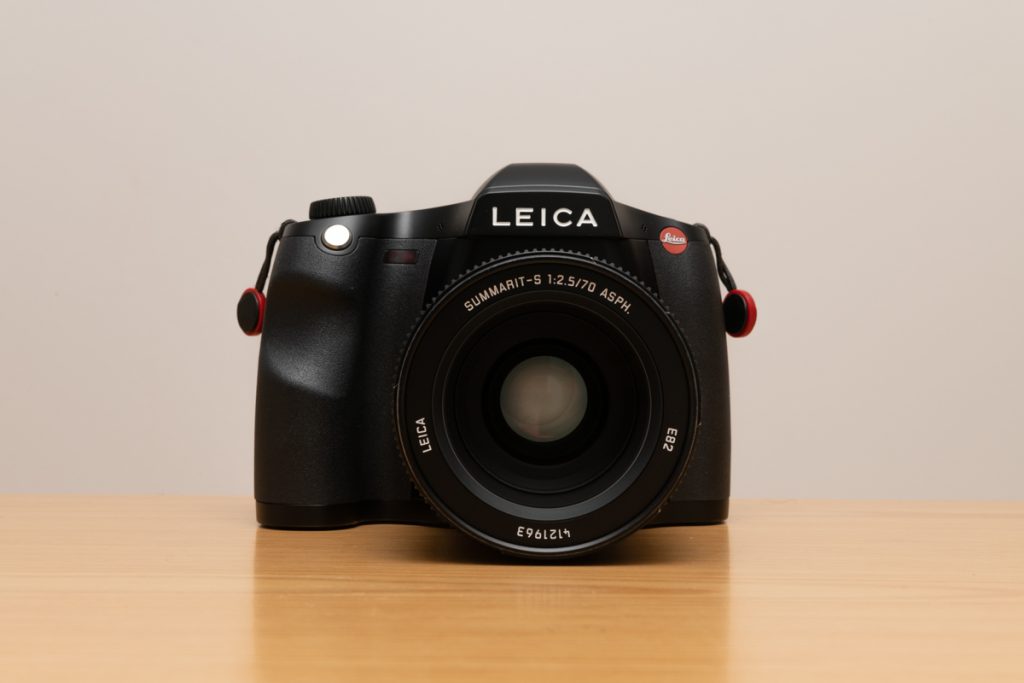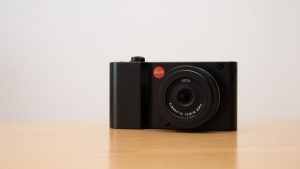LEICA S(typ 007) Review
The Overview of This Article
This article is a review of the LEICA S (typ 007). Since there are not many reviews available for this model, the motivation for writing it is to provide helpful information for those considering a purchase.
Introduction
In the fall of 2021, I acquired the LEICA S (typ 007) through a fortunate opportunity. This purchase came after parting ways with my previous camera, the HASSELBLAD X1D II 50C. While I was generally satisfied with the image quality of the X1D II 50C, my second purchase of the NIKON D850 made me rediscover the advantages of an optical viewfinder. As a result, I decided to focus on a digital medium-format camera equipped with an optical viewfinder for my next step.
Pre-Purchase Considerations
Now, as I look at blogs from individuals who have adopted the LEICA S (typ 007) and the Leica S system, it’s clear that civilian reviews of the Leica S system are unfortunately scarce, not only in Japan but also in the English-speaking world. If you want to learn more about this model, your only option is to search for English-language reviews and videos to piece together fragmented information.
For me, the decisive factor in my purchase was the video linked below. The creator, a photographer from Guam, provides a comparative review of the X1D II 50C and the LEICA S (typ 007), just like me, using both cameras. (By the way, it seems he has since sold the S and switched to the LEICA SL (typ 601). It’s no surprise, as the SL is indeed a fantastic camera.)
The most helpful part of this video was the comparison of autofocus speeds between the two models. It clearly states, ‘The LEICA S is faster.’ Given my struggles with the painfully slow autofocus of the X1D II 50C, this was a significant motivating factor for my purchase. In fact, I can say that this one point alone nearly sealed the deal. That’s how slow the autofocus on the X1D II 50C was for me…
With all that in mind, I welcomed this camera into my collection.
Appearance and Build Quality

The design is very heavy and massive. The military section has a texture more like paint than chrome, and it’s made by the same designer (Manfred Meinzer) as the R8/R9 and SL, but personally, I prefer the SL. However, when I took some photos for the blog, I realized it is a beautifully balanced camera. Yes, it is beautiful.
I feel that the texture of the rear dial, which also serves as a push button, is superior on the SL. Compared to the SL’s smooth feel, the S’s dial has a larger push stroke, and when you turn the dial, the internal spring feels a bit unstable and rattles. Additionally, the dial button is stiff, and there may be individual variations, but the response isn’t very good either. The joystick, which also serves as the AF-ON button, is stiff as well, and I personally prefer the SL. Moreover, this joystick has only a single central focus point on the S, which feels like a waste unless you’re shooting in live view. Although the release dates are not too far apart, the texture of the body and buttons on the SL, which is about two-fifths of the price, is unfortunately better.
Regarding the grip, it is more ergonomic compared to the straight-lined SL, making it easier to hold with one hand. However, the grip is surprisingly shallow, and since you can’t hold it deeply, it requires quite a bit of grip strength and wrist muscle to maintain. While it’s not too bothersome during use, I end up with muscle pain in my wrist the next day. In this respect, the X1D II 50C I used before is much better.
Ease of Focusing
The main factor for switching from the X1D II 50C is the AF speed. When using the Summarit-S 70mm/2.5 ASPH., the AF is quite fast. It feels good that it doesn’t wobble unnecessarily like the contrast AF on the X1D II 50C. However, when using CONTAX 645 lenses through the official adapter, the AF can become quite slow with certain lenses (like the Distagon 2.8/45). In fact, it exhibits a perplexing behavior where the AF motor only starts to move about 0.5 seconds after pressing the AF button. On the other hand, a different lens (the Sonnar 2.8/140) moved quite quickly.
Having only a single central focus point is indeed inconvenient. When taking portraits at wide apertures, I worry about cosine error. Do professionals make fine adjustments in manual focus to compensate for cosine error? I haven’t reached that level yet. In contrast, other medium-format cameras like the Hasselblad H and Phase One XF, which also have a single central focus point, come with a focus adjustment feature that automatically corrects for cosine error, so I find that quite enviable.
In addition to AF speed, another major reason for upgrading from the X1D was the optical viewfinder. However, it doesn’t feel as wide as it’s described in overseas reviews as being “dream-like.” Perhaps my perception is skewed because my other camera, the D850, has an excellent viewfinder… But after looking through the S’s viewfinder and then the SL’s EVF, I can’t help but feel that the fantastic EVF of the SL seems “Oh, was it this dark and unclear?” So I think it’s fair to say that the S’s viewfinder is indeed impressive. It makes it easy to find the focus peak. While it certainly falls short of the latest EVF’s magnification, the live view LCD on the S has a resolution of 920,000 dots, which is relatively coarse, and the contrast and color of the screen can sometimes appear strange. As a result, even when using a tripod, I tend to prefer the optical viewfinder over live view. The AF during live view is slow, but it’s not hopelessly slow. I believe it could be quite usable for landscape photography.
Image Quality

As expected, the image quality is indisputable. For some reason, even when stopped down to f16 or more, it produces images with more three-dimensionality than a 35mm full-frame sensor… The sensor is a CMOS with a pixel pitch of 6μm, and it should be of the same generation as the SL, but it feels deeper than the SL, and the dynamic range is wider with excellent post-processing latitude. Even when combined with non-genuine CONTAX 645 lenses, it captures images quite clearly, making lens experimentation enjoyable.
However, the accuracy of the white balance is honestly a bit tricky… Even with some adjustments on-site, images can appear too blue or green, making out-of-camera shots not very usable. I feel that when using LEICA S-mount lenses, the colors come out a bit more naturally compared to CONTAX lenses (using CONTAX can result in indoor photos looking too blue). In this respect, the manufacturer’s lenses tend to perform better. Still, when it comes to color quality, the X1D II 50C is overwhelmingly superior. This is the one aspect that makes me think I should have held on to the X1D.
Regarding image creation, as noted in other reviews, it doesn’t produce the “classic Leica” look with strong shadows and a subdued palette, but rather a more material and natural image. That said, it still has a Leica-like quality in its shading, and when taking portraits, it provides an overwhelming presence. This is another point that I personally appreciate. Photos taken with the SL can produce stunning images when they fit just right, but most of the time they come out too muted.
In terms of high ISO performance, even though it has the same generation sensor and pixel pitch as the SL, I feel it somehow performs at least one stop better. Up to ISO 1600, it’s nearly noise-free with rich gradation, and even at ISO 3200, it gives a very usable impression. This was honestly a pleasant surprise.
Functionality and Other Observations
Below, I will write down some observations and thoughts I’ve had while using the camera.
Before purchasing, I had high expectations for the built-in level in the viewfinder, but the display is small and low resolution, so it’s not very reliable. Especially when shooting in portrait orientation, it’s difficult to use effectively. It’s better to ensure proper leveling yourself. I would like to replace it with a focusing screen that has a grid, but it costs around 50,000 yen, so I can’t change it casually…
One surprisingly useful feature is the image transfer to smartphones via Wi-Fi. There is a stark difference in behavior when connecting compared to the SL. With the SL, although the initial pairing with the dedicated app goes smoothly, the subsequent image transfer doesn’t progress at all, and not even the thumbnails of the images in the camera appear. Even when the connection is finally established, the transfer speed is so slow that it’s honestly not usable. In contrast, once connected, the image transfer on the S proceeds relatively quickly. However, for some reason, I have to wait about a minute after turning on the camera’s Wi-Fi before I can connect to the app, which can be a bit frustrating until you get used to it. That said, it’s much easier to use than the SL.
I feel a bit frustrated with the freedom of aperture (f-stop) adjustment. For some reason, it only allows adjustments in 1/2-stop increments, and changing to 1/3-stop increments is not possible. I would prefer to use 1/3-stop increments like regular Japanese cameras or the SL.
Occasionally, it freezes. When it does, I can’t even turn off the power, so I have no choice but to remove the battery.
I think it’s quite a defect for a professional camera, but there are times when images are not recorded at all. In my camera, the images themselves don’t get saved. I’ve experienced many instances of images not being recorded after live view shooting, so it seems that if continuous shooting is done in live view, the image processing engine might get busy, allowing for operation but not accepting recordings? I’ve had significant failures twice, so I’ve developed the habit of frequently checking recorded images after shooting.
It can shoot 4K video, but it’s in dot-by-dot Super35 size (APS-C). With the Summarit 70mm, it effectively becomes 105mm, which is honestly not very convenient, and the video quality doesn’t seem that great either. Interestingly, it appears that video recording can only be done with an SD card (recording is not possible with the dual-slot CF cards). Moreover, I encountered an issue where, after shooting for a few minutes with an SD card that should be fast enough, I received a message saying, “The card’s write speed is slow, so recording will be interrupted,” and it stopped recording on its own. I made this mistake during my child’s play performance. On an important occasion where mistakes are not allowed, it’s better to use a proper video camera…
Due to the large mirror required for large format specifications, there is some shutter shock, but it doesn’t feel excessively large. In a review article by a certain humidified storage company in Shinjuku, it mentioned that when using the Apo-Elmar 3.5/180 handheld, you need to raise the shutter speed to around 1/1000 to avoid blur, which made me anxious before purchase. However, when using the Summarit 70mm, 1/125 is sufficient to freeze the action. Perhaps with the Apo-Elmar, there is some resonance frequency issue.
In Conclusion
In this article, I aimed to increase the information available about the LEICA S (typ 007), which is experiencing a shortage of user reviews globally, by writing various thoughts in a somewhat haphazard manner. Thank you to everyone who read through this long text until the end.
